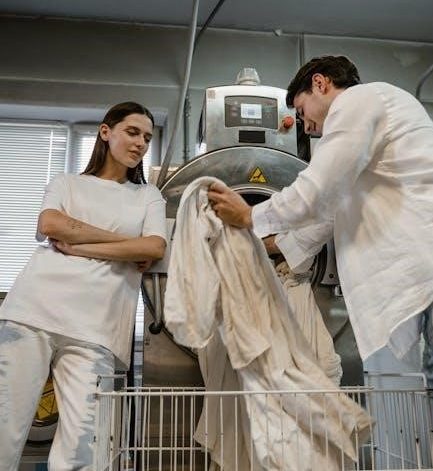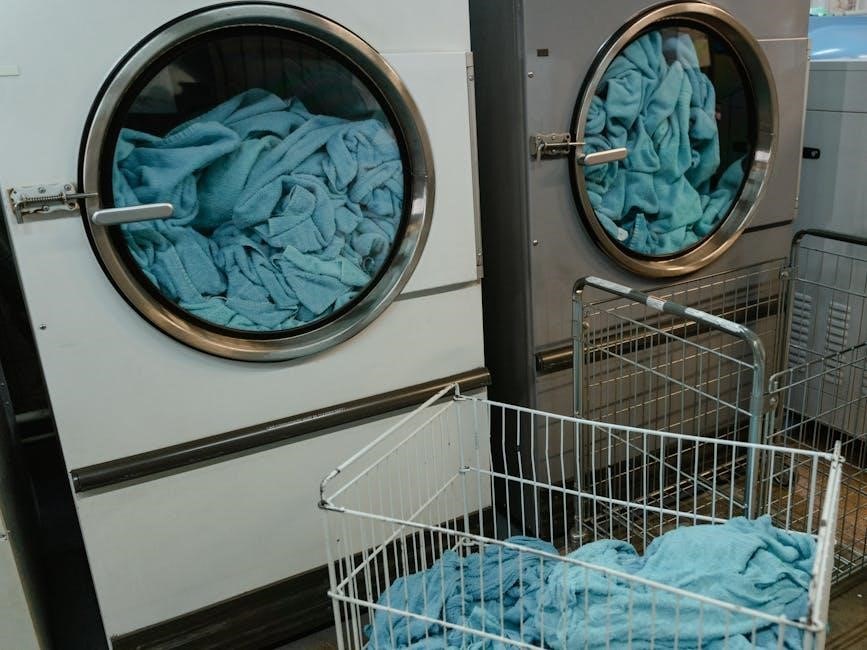Contemporary collecting explores the cultural, historical, and personal significance of objects in modern society, as discussed in Kevin M. Moist and David Banash’s seminal work.
Definition and Scope of Contemporary Collecting
Contemporary collecting refers to the modern practices and cultural frameworks surrounding the acquisition, preservation, and interpretation of objects. As explored in Kevin M. Moist and David Banash’s Contemporary Collecting: Objects, Practices, and the Fate of Things, it encompasses both personal and institutional collecting, blending historical significance with current societal values. This field examines how objects are contextualized, commodified, and cared for in today’s globalized and digitized world. The scope extends beyond traditional notions of collecting, addressing ethical dilemmas, technological advancements, and the evolving roles of museums and private collectors. It also highlights how contemporary collecting reflects cultural shifts, challenging traditional boundaries between ownership, preservation, and consumption.
The Role of Kevin M. Moist in Contemporary Collecting Discourse
Kevin M. Moist is a pivotal figure in contemporary collecting discourse, best known for co-editing Contemporary Collecting: Objects, Practices, and the Fate of Things with David Banash. This work has become a cornerstone in the field, offering a comprehensive exploration of modern collecting practices. Moist’s contributions emphasize the cultural and historical significance of objects, while addressing ethical and practical challenges faced by collectors and institutions. His scholarship bridges personal and professional collecting, providing insights into how digital technologies and globalization are reshaping the landscape of collections. By examining the evolving role of collectors and the future of collecting, Moist’s work has significantly influenced academic and professional discussions, making him a key voice in the discourse surrounding contemporary collecting.

Key Themes in “Contemporary Collecting: Objects, Practices, and the Fate of Things”
The cultural significance of objects, evolving collecting practices, and the impact of digitization are central themes, alongside ethical considerations and the future of collections in a digital age.
The Cultural and Historical Significance of Objects in Collections
Objects in collections hold deep cultural and historical value, serving as tangible connections to the past. Contemporary collecting, as explored in Kevin M. Moist and David Banash’s work, highlights how these items embody the beliefs, practices, and identities of their origins. Whether acquired for personal passion or institutional preservation, objects in collections often carry stories that transcend their material form. They serve as repositories of memory, offering insights into historical events, social norms, and artistic movements. The cultural significance of these objects is further amplified by their ability to evoke emotional and intellectual connections, making them invaluable for education, research, and inspiration. Collectors and institutions play a crucial role in preserving and interpreting these artifacts, ensuring their relevance in a rapidly changing world. This emphasis on cultural and historical significance underscores the enduring importance of collecting practices in contemporary society.
Personal and Professional Collecting Practices in the Modern Era
Contemporary collecting practices have evolved to encompass both personal and professional dimensions, reflecting diverse motivations and methodologies. Personal collecting often stems from emotional connections, hobbies, or a desire to preserve memories, while professional collecting is driven by institutional goals, scholarly research, or market trends. Kevin M. Moist and David Banash’s work emphasizes the intersection of these practices, highlighting how individuals and institutions navigate the complexities of acquiring, preserving, and displaying objects; Digital tools and global connectivity have further transformed these practices, enabling collectors to access rare items and share knowledge on an unprecedented scale. Whether driven by passion or profession, contemporary collecting practices continue to shape how we engage with and interpret the material world in the 21st century.
The Impact of Digitization on Collecting and Collections
Digitization has profoundly transformed contemporary collecting, offering unprecedented accessibility to collections while reshaping practices. Digital platforms enable global access to artifacts, fostering a more inclusive and democratic engagement with cultural heritage. Collectors can now acquire, share, and preserve objects virtually, reducing reliance on physical storage. Kevin M. Moist and David Banash highlight how digitization bridges gaps between personal and institutional collecting, creating new opportunities for collaboration. However, it also raises questions about authenticity and ownership in the digital realm. As technology advances, the interplay between physical and digital collecting continues to evolve, challenging traditional notions of collection management and curation. Digitization not only enhances preservation but also redefines how collections are experienced and interpreted in the modern world.

Contemporary Collecting Practices
Contemporary collecting practices reflect a dynamic interplay between personal passion and institutional curation, integrating technology to enhance preservation, organization, and the sharing of cultural and historical artifacts.
The Evolution of Collecting Practices in the Digital Age

The digital age has revolutionized collecting practices, enabling greater accessibility and connectivity. Digital tools now facilitate the creation of comprehensive catalogs, while online platforms and social media have transformed how collectors discover, acquire, and share items. The rise of digital marketplaces has democratized collecting, allowing global participation and fostering new communities. Additionally, advancements in technology, such as blockchain for authentication and virtual exhibitions, have enhanced the preservation and presentation of collections. These innovations have not only expanded the scope of collecting but also redefined its cultural and historical significance in a rapidly changing world.
Collectors and Collections in a Globalized World
Globalization has significantly influenced contemporary collecting, enabling collectors to access diverse cultural artifacts and connect with international communities. The internet and digital platforms have bridged geographical gaps, allowing for cross-border exchanges and collaborations. Collectors now engage with a broader range of objects, reflecting global cultural shifts and hybrid identities. This globalization has also raised questions about cultural appropriation, ownership, and the ethical responsibilities of collectors. As a result, there is a growing emphasis on understanding the historical and cultural contexts of collected items. Collectors and institutions must navigate these complexities to ensure respectful and sustainable practices in an increasingly interconnected world.

Challenges and Ethics in Contemporary Collecting
Contemporary collecting faces ethical dilemmas, including ownership rights, cultural sensitivity, and preservation responsibilities, requiring collectors to balance personal passion with societal and environmental accountability.
Ethical Considerations in Acquiring and Preserving Objects
Ethical considerations in contemporary collecting involve ensuring the legal and moral integrity of acquisitions, focusing on issues like ownership rights and cultural sensitivity. Collectors must verify the provenance of objects to avoid supporting illicit trade or cultural exploitation. Preservation practices should prioritize sustainability, minimizing environmental impact while maintaining the integrity of artifacts. Additionally, ethical collecting requires collaboration with communities of origin, ensuring their voices are heard and their heritage is respected. These principles apply equally to personal collectors and institutions, fostering accountability and transparency. By adhering to ethical guidelines, collectors can balance the preservation of cultural heritage with the responsibilities of stewardship, ensuring that objects are appreciated and protected for future generations.
The Role of Museums and Institutions in Contemporary Collecting
Museums and institutions play a pivotal role in contemporary collecting by serving as custodians of cultural and historical heritage. They acquire, preserve, and exhibit objects for public education and research, ensuring their accessibility to future generations. These organizations often set ethical standards for collecting practices, emphasizing provenance verification and responsible acquisition. Digitization efforts by institutions have further enhanced the preservation and accessibility of collections, allowing global audiences to engage with artifacts remotely. Collaborations between museums and communities of origin foster cultural respect and inclusivity. By balancing preservation with innovation, museums remain central to the discourse on contemporary collecting, as highlighted in discussions by scholars like Kevin M. Moist and David Banash.
Future Trends in Collecting
Future trends in collecting emphasize sustainability, digital integration, and ethical practices. Emerging technologies like AI and blockchain enhance collection management and accessibility, shaping the future of cultural preservation.
Emerging Technologies and Their Impact on Collecting
Emerging technologies are revolutionizing contemporary collecting, offering new ways to acquire, preserve, and engage with objects. Digital tools like AI and blockchain enhance cataloging, authentication, and provenance tracking. The Internet of Things (IoT) enables real-time monitoring of environmental conditions, ensuring optimal preservation. Virtual and augmented reality create immersive experiences, allowing collectors to interact with objects remotely. Digital twins and 3D printing facilitate replication and study without damaging originals. These technologies not only expand accessibility but also promote sustainability in collection practices, making the field more dynamic and inclusive for future generations.
The Growing Importance of Sustainability in Collection Practices
Sustainability has become a critical focus in contemporary collecting, as ethical and environmental concerns shape modern practices. Collectors and institutions are increasingly prioritizing eco-friendly methods to acquire, preserve, and display objects. The reduce-reuse-recycle principle is being applied to collection management, emphasizing minimal waste and resource efficiency. Green technologies, such as energy-efficient storage solutions and sustainable materials, are gaining prominence. Ethical sourcing of objects and responsible deaccessioning practices are also central to sustainable collecting. These shifts reflect broader societal values and ensure that collections remain relevant and responsible in the 21st century. As highlighted in discussions around contemporary collecting, sustainability is not just a trend but a necessary evolution for the future of collection practices.
Case Studies and Examples
Notable collectors and their contributions highlight contemporary collecting’s diversity, as seen in Kevin M. Moist’s work, offering insights into modern trends and practices shaping the field today.
Notable Collectors and Their Contributions to Contemporary Collecting
Notable collectors have played a pivotal role in shaping contemporary collecting practices, as explored in Kevin M. Moist’s work. These individuals, often driven by passion and curiosity, have amassed collections that reflect cultural, historical, and personal significance. Their contributions not only preserve artifacts but also offer insights into the evolving nature of collecting. For instance, some collectors specialize in rare or ephemeral objects, while others focus on digital or intangible items, challenging traditional notions of ownership and preservation. Moist’s analysis highlights how these collectors navigate the complexities of modern collecting, blending personal fascination with broader societal trends. Their stories, as documented in Contemporary Collecting: Objects, Practices, and the Fate of Things, illustrate the diversity and creativity of collecting in the 21st century.
Successful Collection Strategies in the 21st Century
Successful collection strategies in the 21st century emphasize adaptability, innovation, and ethical practices. As explored in Kevin M. Moist’s work, collectors increasingly embrace digitization to preserve and share collections, ensuring accessibility and longevity. Sustainability has also become a key focus, with many prioritizing eco-friendly storage and display methods. Additionally, global connectivity has enabled collectors to diversify their holdings, incorporating diverse cultural and historical artifacts. Ethical considerations, such as provenance and cultural sensitivity, are now paramount. These strategies reflect a shift toward a more inclusive and responsible approach to collecting, addressing both personal and societal needs. By integrating technology, sustainability, and ethical awareness, contemporary collectors are redefining how objects are acquired, preserved, and appreciated in the modern world.






